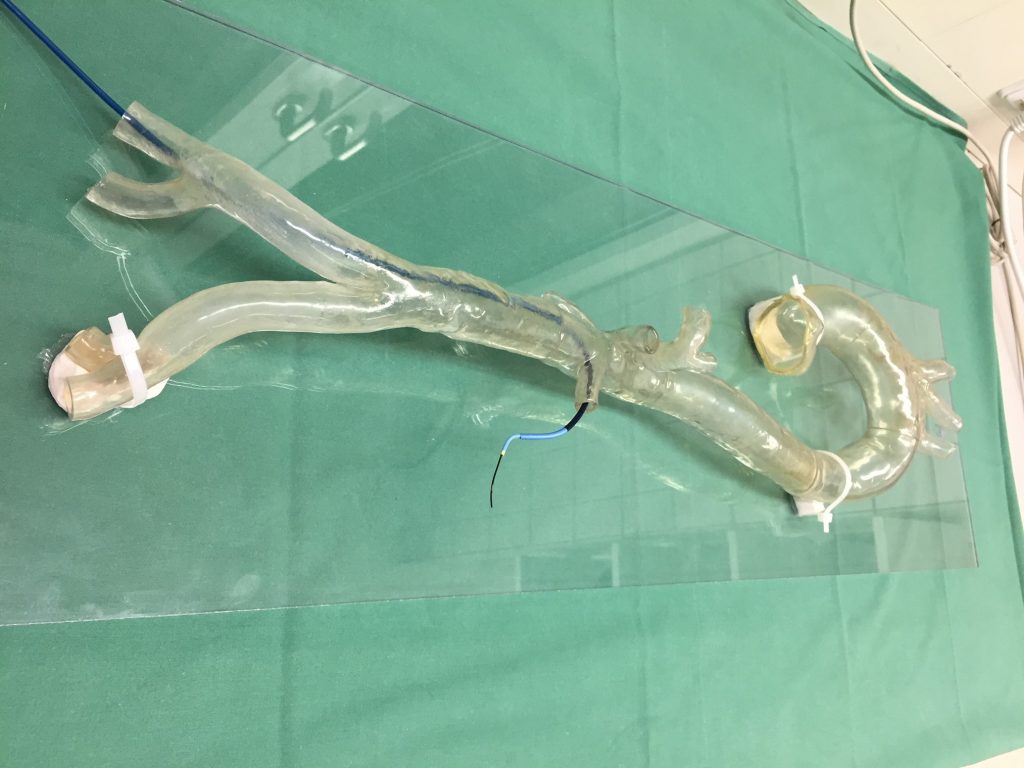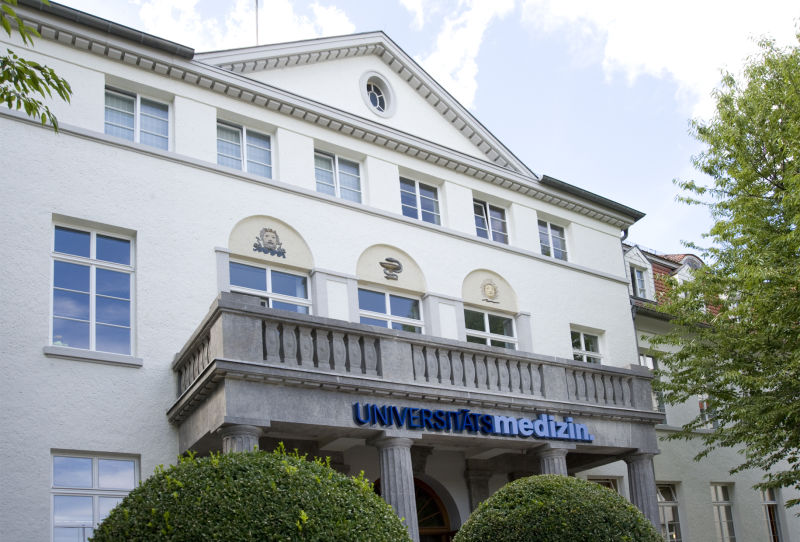Dr. Bernhard Dorweiler is Head of the Department of Vascular Surgery at University Hospital Mainz in Germany. In a number of cases at the University, Dr. Dorweiler and his team have been using 3D printed models to practice delicate surgeries, and ultimately save lives due to a better understanding of each specific condition.
Recently, a 53 year old patient consulted Dr. Dorweiler for an extreme case of aortic arch aneurysm, having been turned away from other hospitals due to the complexity of the case. By using a 3D printed model, the team at Mainz were able to operate on the patient, and reduce the risk of life-threatening ruptures inside the body.
A clearer view of the condition
“On average, CT scans with 1000-2000 images can be made per vascular-related patient case, which the surgeons use to analyze and diagnose the illness,” explains Dr. Dorweiler, “This can be ambiguous and time-consuming when the issue is complex.”
The aneurysm near the patient’s heart was causing a reciprocal bulge of a vessel in her neck. If left untreated, the vessel could have burst at any time, spilling blood inside the body. So close to the heart, the malformation made it exceedingly risky to operate, and so the utmost care was taken when considering how to perform the procedure.
“Looking through the CT Scans, it was impossible to clearly visualize the anatomy,” explains Dr. Dorweiler, “so we decided to 3D print a model, and it was then for the first time that it became clear what the origin and magnitude of the problem was.”

Practice makes perfect
A complete model of the affected vessel was 3D printed based on scan data collected from the patient. Choosing to make the model in a clear resin, surgeons were able to practice the procedure with a full view of the wire utensil used as it moves through the vessel. “Not only did we use the model to explain our findings to the patient to increase her compliance for the planned 3-step operation,” adds Dr. Dorweiler, “but we even took it into each of the three surgeries as a point of reference during operation, which was crucial to the successful outcome.”
University Hospital Mainz surgeons used a Stratasys Eden260VS 3D Printer to make the vessel model, indicative of a plan set out by the company to introduce its machines into more medical facilities. In addition, the models are used at Mainz to help train future vascular surgeons.

The difference between life and death
The prevalence of 3D printed medical models is clearly being felt across the industry as more companies are incorporating their technologies into healthcare. 3D Systems also has a dedicated healthcare facility, and used its skills in a landmark operation to separate the conjoined McDonald twins.
The life-saving potential that 3D printing offers to complex medical conditions is still undergoing research, though many startups are also launching with this expressed purpose in mind.
Commenting on the Stratasys case study, Dr. Dorweiler concludes, “With 3D printed models we can quickly understand the individual patient anatomy and best determine the type of treatment required to successfully treat it,”
“…Research is still ongoing, but if you take an average surgery time of 2-4 hours, you are looking at time savings of up to 40%. When you are dealing with complex vascular cases every day, these time-savings can be the difference between life and death.”
For the latest 3D printing in medical news and more subscribe to the 3D Printing Industry newsletter, follow us on Twitter and like us on Facebook. Learn more at a 3D printing event near you.
Featured image shows the 3D printed model of the aortic arch aneurysm used to practice surgery at University Hospital Mainz. Photo via Stratasys


